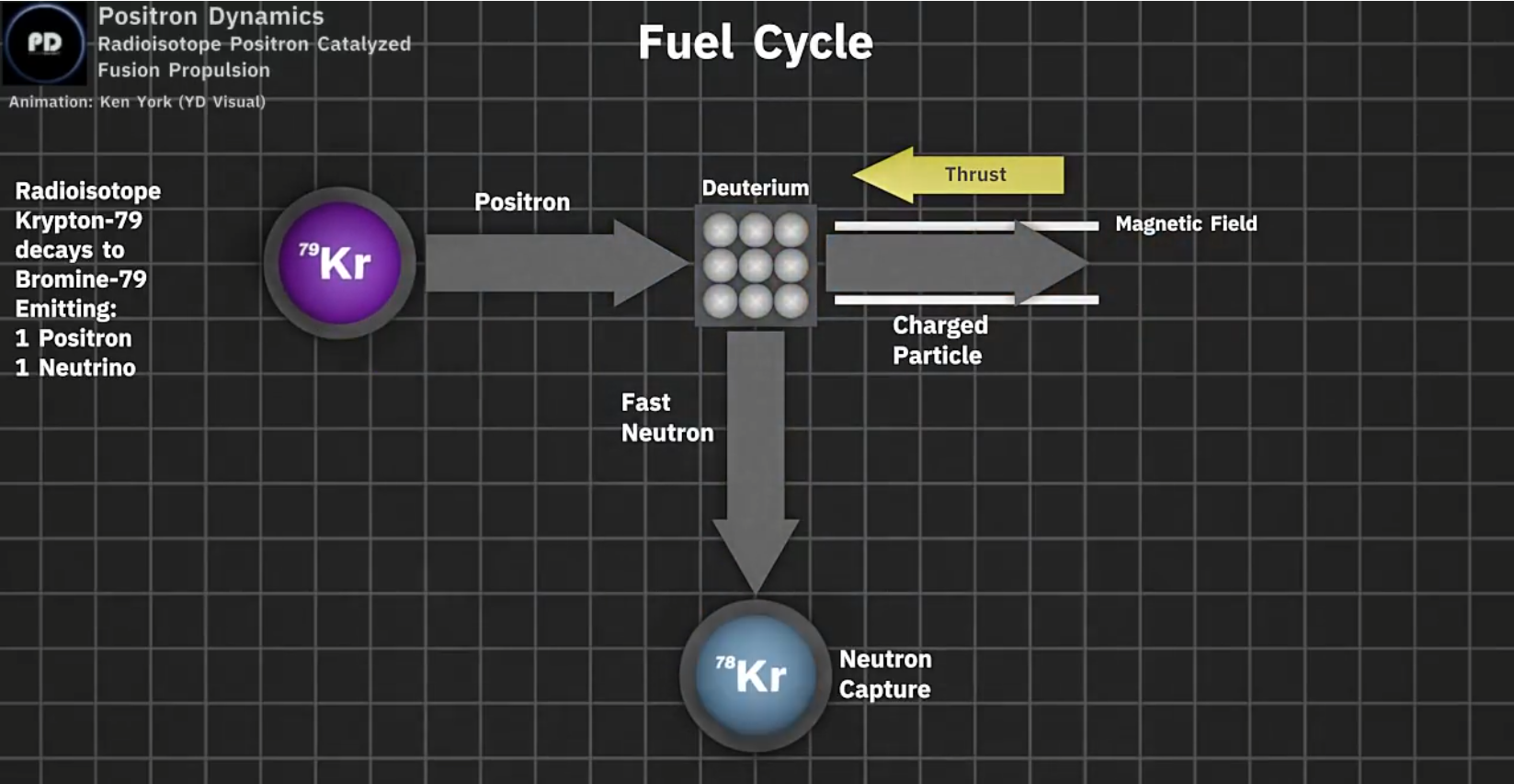How Close Are We To Antimatter Reactors?
We’ve come a long way since Neil Armstrong stepped onto the moon, we’ve built the international space station, sent probes beyond our solar system, landed a rover on Mars, and brief tours into space have become the latest vanity flex of billionaires.
A positron-electron annihilation event produces a high energy gamma ray photon
However, since the moon landing, our method for getting things into space is essentially unchanged: we burn huge amounts of chemical fuel to crudely wrestle gravity into submission with the vast majority of the payload of any space mission being taken up by fuel tanks and booster rockets – a profoundly costly solution.
Reaching even the closest star to the sun, Proxima Centauri, using current chemical propulsion approaches would take 30,000 years — but advanced aerospace company Positron Dynamics are building the rocket that could cut that trip down to just 40 years using positron-electron annihilation events to catalyse an onboard fusion reactor in a process called positron-catalysed fusion (PCF).
The proposed fuel cycle uses Kr 79 as a source of positron emission to catalyse fusion of a deuterium reactor. Fusion events release charged particles that are accelerated out of the craft to provide propulsion, while fast neutron by-products are captured by Kr 78 to replenish the fuel source. From Positron Dynamics
PCF reactors have been held back by a number of technological hurdles to produce the required thrust to make them viable space propulsion technologies. One of the key difficulties is efficiently thermalizing "hot" positrons as most mediator materials result in very low efficiencies, often as low as 0.1%.
Positron Dynamics core innovation is a variation on the traditional mediator design that raises this efficiency to 60%; significantly improving the likelihood a positron source could be used to reliably catalyse a fusion reaction.
The dense cold positron beam is directed onto the nuclear fuel, which produces annihilation events, releasing gamma rays that destabilise the fuel triggering nuclear fusion, splitting off charged particles which can then be accelerated out the back of the rocket to generate forward thrust.
SpaceX Starlink satellite constellation in orbit. Taken from YouTube.
How Close Are They?
In March 2020, the Positron Dynamics team was proud to announce a working-concept installation at the University of Berkeley, California. If they can reliably capture cold positrons in sufficient quantities then the core concept behind their antimatter catalysed fusion engine will be proved, laying the foundations for a working antimatter propulsion system. This would indicate the technology is around TRL 4-5.
Although the dream of visiting Proxima Centauri is the vision for the future, the company typically raises investment around the idea of applying this technology into the satellite sector, specifically for CubeSats, which are some of the most common small satellites deployed in large constellations around the world such as SpaceX’s Starlink network, which is providing satellite enabled internet.
CubeSats are small and cheap to launch and as a result they typically don’t have very good (if any) onboard propulsion, so after a few years they fall out of orbit and burn up in the atmosphere.
Positron Dynamics is proposing to extend that useful working lifetime with their Radioisotope Positron Propulsion systems. The risk here is that industry actually favours CubeSats having such a short lifetime, because it means they don’t contribute to the increasing debris field around our planet, and it also allows for fast technology refresh rates of constellations as hardware improves. We are moving away from satellites that sit up in space for 30 years with increasingly out of date technology on them.
Whilst not the antimatter reactor we imagine from the USS Enterprise, Positron Dynamics’s system may one day mean an economical, efficient and - most importantly - rapid means of space travel, finally unlocking the doors to the final frontier.
Find out more by watching our video: https://youtu.be/LyjwUwhJqjQ
More information here:
http://www.positrondynamics.com/
https://www.nasa.gov/directorates/spacetech/niac/2018_Phase_I_Phase_II/Radioisotope_Positron_Propulsion/
https://aip.scitation.org/doi/10.1063/1.5127534


